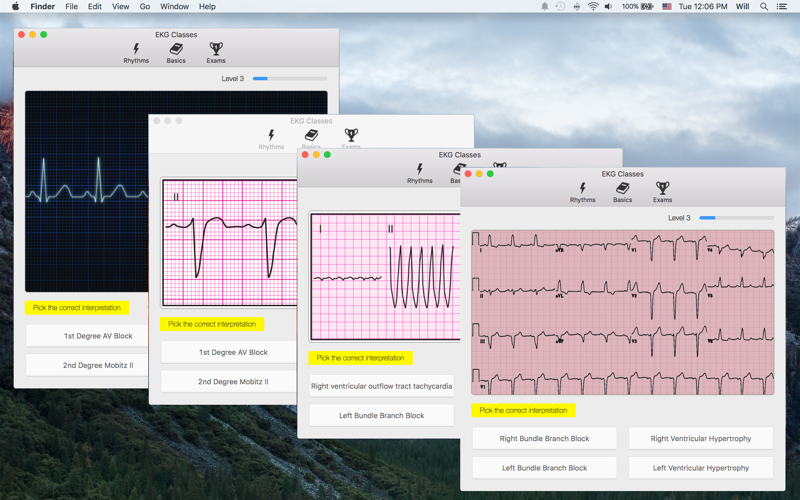
Build a solid EKG knowledge base for your future doctor career. The app covers the most fundamental chapters of EKG knowledge body in an extreme brief yet efficient manner, and more importantly it lists hundreds of EKG exam questions that you may find familiar with during your college exams.
Your hearts electrical system controls all the events that occur when your heart pumps blood. The electrical system also is called the cardiac conduction system. If youve ever seen the heart test called an EKG (electrocardiogram), youve seen a graphical picture of the hearts electrical activity.
Your hearts electrical system is made up of three main parts:
The sinoatrial (SA) node, located in the right atrium of your heart
The atrioventricular (AV) node, located on the interatrial septum close to the tricuspid valve
The His-Purkinje system, located along the walls of your hearts ventricles
A heartbeat is a complex series of events. These events take place inside and around your heart. A heartbeat is a single cycle in which your hearts chambers relax and contract to pump blood. This cycle includes the opening and closing of the inlet and outlet valves of the right and left ventricles of your heart.
Each heartbeat has two basic parts: diastole and systole. During diastole, the atria and ventricles of your heart relax and begin to fill with blood.
At the end of diastole, your hearts atria contract (atrial systole) and pump blood into the ventricles. The atria then begin to relax. Your hearts ventricles then contract (ventricular systole), pumping blood out of your heart.
Each beat of your heart is set in motion by an electrical signal from within your heart muscle. In a normal, healthy heart, each beat begins with a signal from the SA node. This is why the SA node sometimes is called your hearts natural pacemaker. Your pulse, or heart rate, is the number of signals the SA node produces per minute.



